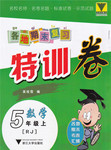题目内容
【题目】 Danelle Ballengee, 35, was a world-class athlete who had run in over 500 long distance competitions through deserts and mountains around the world. Up ahead, Taz disappeared, but Danelle did not worry as she climbed a rocky path to the top of a ridge (山脊) near the top, her foot hit a piece of ice. She slipped over a stone and fell over a cliff (悬崖).
She was badly injured. She could swing her toes but when she tried to stand, the pain was terrible. The lower half of her body was useless.
Danelle looked at her watch. It was noon. She guessed she was three kilometers from her truck trapped in a hidden desert in winter. Then she heard Taz. He ran down from the top to meet her. Danelle remained still, her pain became less serious and she could think her way out of this trap. She would follow Taz down the path to the valley floor and crawl back to her truck.
She rolled onto her stomach. Taz went ahead of her, then back, wondering why Danelle didn’t follow him. Bearing the pain, she focused on her task.
Five hours later, Danelle reached the valley bottom, 500 meters closer to her goal, too tired. Then she noticed an ice-covered hole. She needed water to go through. She dipped her bottle into the hole, but it came out full of soil. She used the lid to slowly pick water from the surface. It took over 50 picks to get enough. She finally stopped as it was full. Danelle reached out to her and she put her arms around Taz. She fell his warmth and held on.
As the hours went on, Danelle tried to pay no attention to the pain and cold. She stared at the night sky, talked to Taz and counted the stars with him. Pain annoyed her constantly. Throughout the night, she took sips of water, realizing that if she drank too much, she would urinate and the liquid would freeze on her legs.
【1】How do you judge that Danelle was an experienced athlete?
A.She had trained for lots of times.
B.She had been a player for many years.
C.She had got through too many troubles.
D.She had taken part in hundreds of competitions.
【2】What does the underlined word “task” refer to in Para. 4?
A.To reach her truck.B.To find the rocky path.
C.To arrive at the valley floor.D.To make Taz get what she wanted.
【3】How did Danelle get clean water from the hole into her bottle?
A.By dipping her bowl into the hole.
B.By dipping her bottle into the hole.
C.By using the lid to pick water from the surface.
D.By using her hand to pick water from the surface.
【4】What did Danelle do to fight the pain and cold?
A.She took some medicine and made a fire.
B.She counted the stars and talked with Taz.
C.She asked Taz to put warm clothes on her.
D.She drank hot water and wrapped the wound.
【答案】
【1】D
【2】A
【3】C
【4】B
【解析】
这是一篇记叙文。文章主要记叙了世界级运动员Danelle Ballengee在一场长跑比赛中,从一处悬崖上摔了下来,在受了重伤的情况下和朋友Taz奋力求生的故事。
【1】推理判断题。根据第一段中Danelle Ballengee, 35, was a world-class athlete who had run in over 500 long distance competitions through deserts and mountains around the world.可知,35岁的Danelle Ballengee是一位世界级的运动员,她参加了500多场穿越世界各地沙漠和山脉的长跑比赛。由此可推知,从Danelle参加了数百项比赛,Danelle是个有经验的运动员。故选D。
【2】词意猜测题。根据第三段中She would follow Taz down the path to the valley floor and crawl back to her truck.可知,她会跟着Taz沿着小路走到谷底,然后爬回她的卡车。由此可知,Danelle忍受着痛苦,专注于想要回到自己的卡车那里。由此可知,此处task是指“回到她的卡车”。故选A。
【3】细节理解题。根据倒数第二段中She used the lid to slowly pick water from the surface.可知,她用盖子慢慢地把水面上的水收集起来。由此可知,Danelle通过用瓶盖从水面把水收集起来,从洞里把干净的水倒进她的瓶子里。故选C。
【4】细节理解题。根据最后一段中As the hours went on, Danelle tried to draw herself from the pain and cold. She stared at the night sky, talked to Taz and counted the stars with him.可知,随着时间的流逝,Danelle试着不去注意疼痛和寒冷。她盯着夜空,和Taz说话,和他一起数星星。由此可知,Danelle通过数星星和和Taz说话来对抗疼痛和寒冷。故选B。

 各地期末复习特训卷系列答案
各地期末复习特训卷系列答案 小博士期末闯关100分系列答案
小博士期末闯关100分系列答案